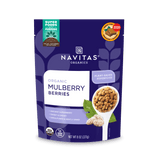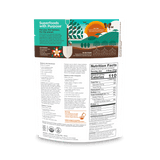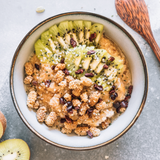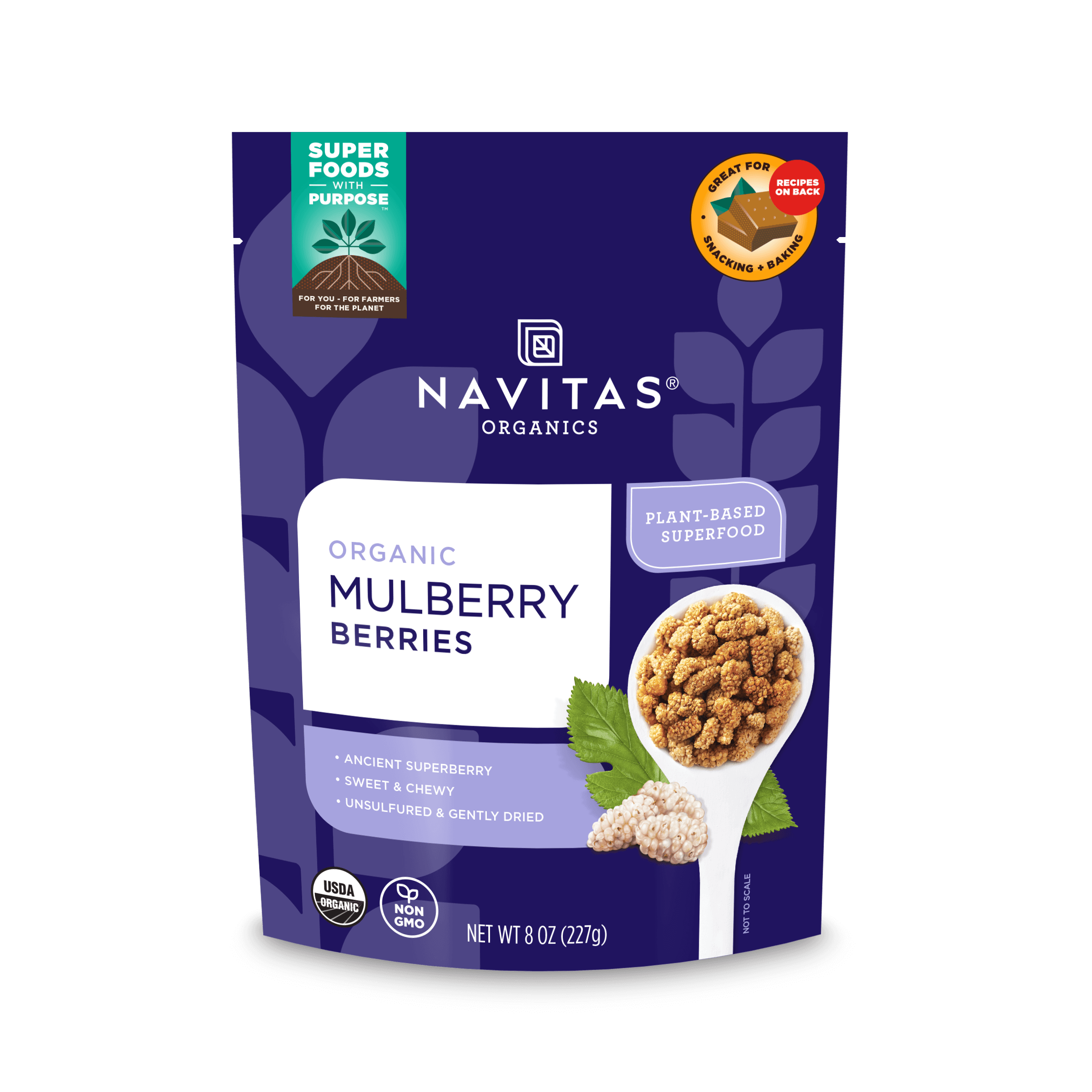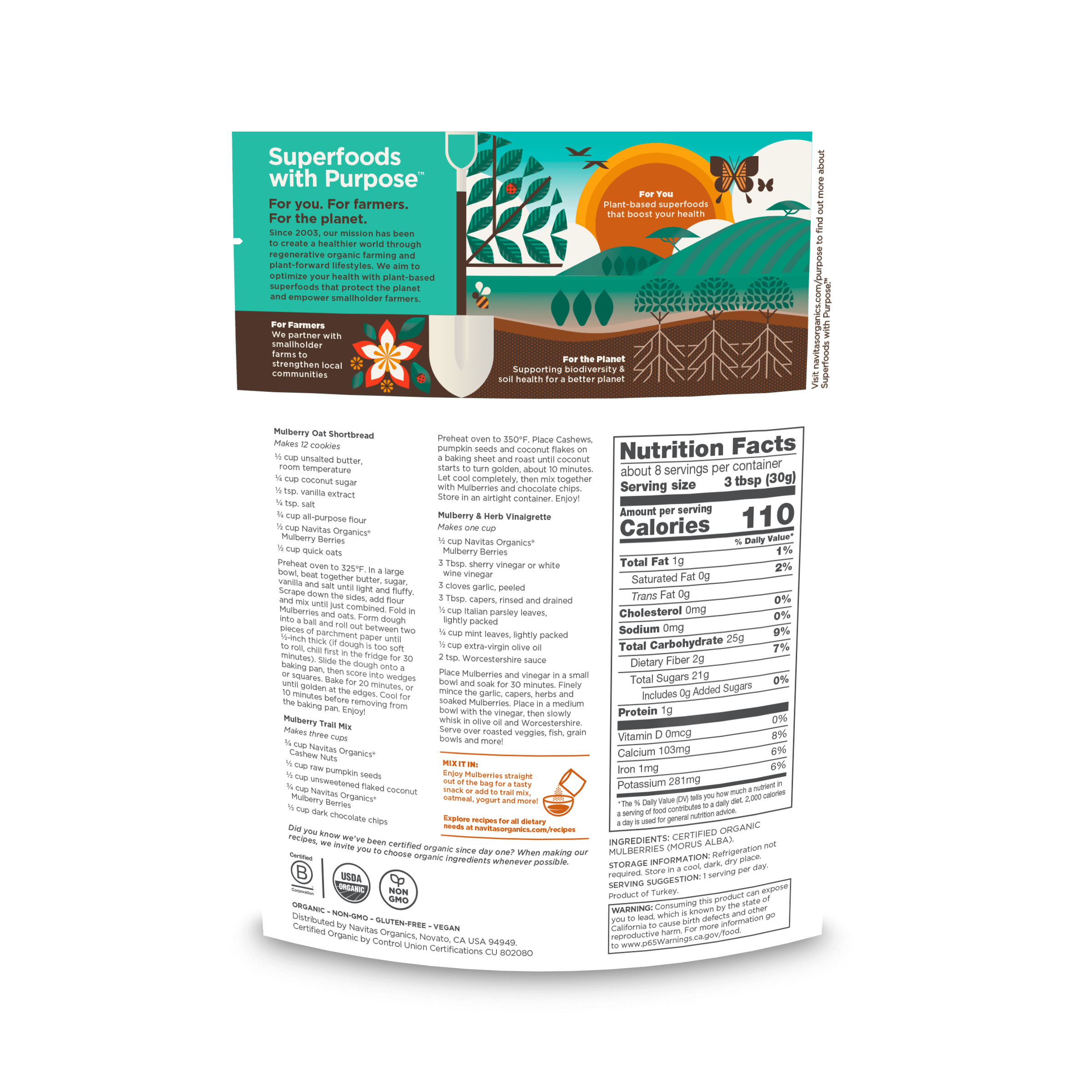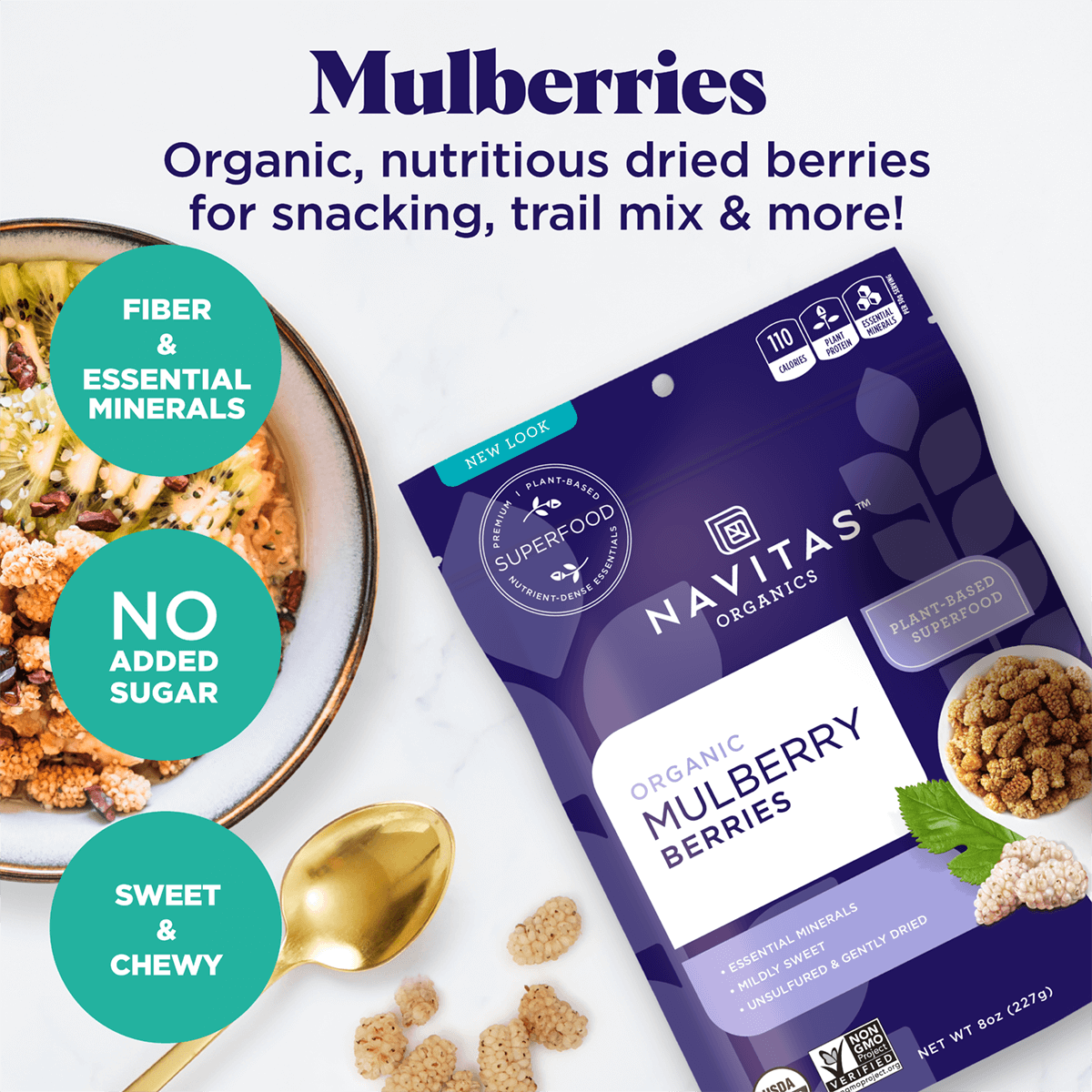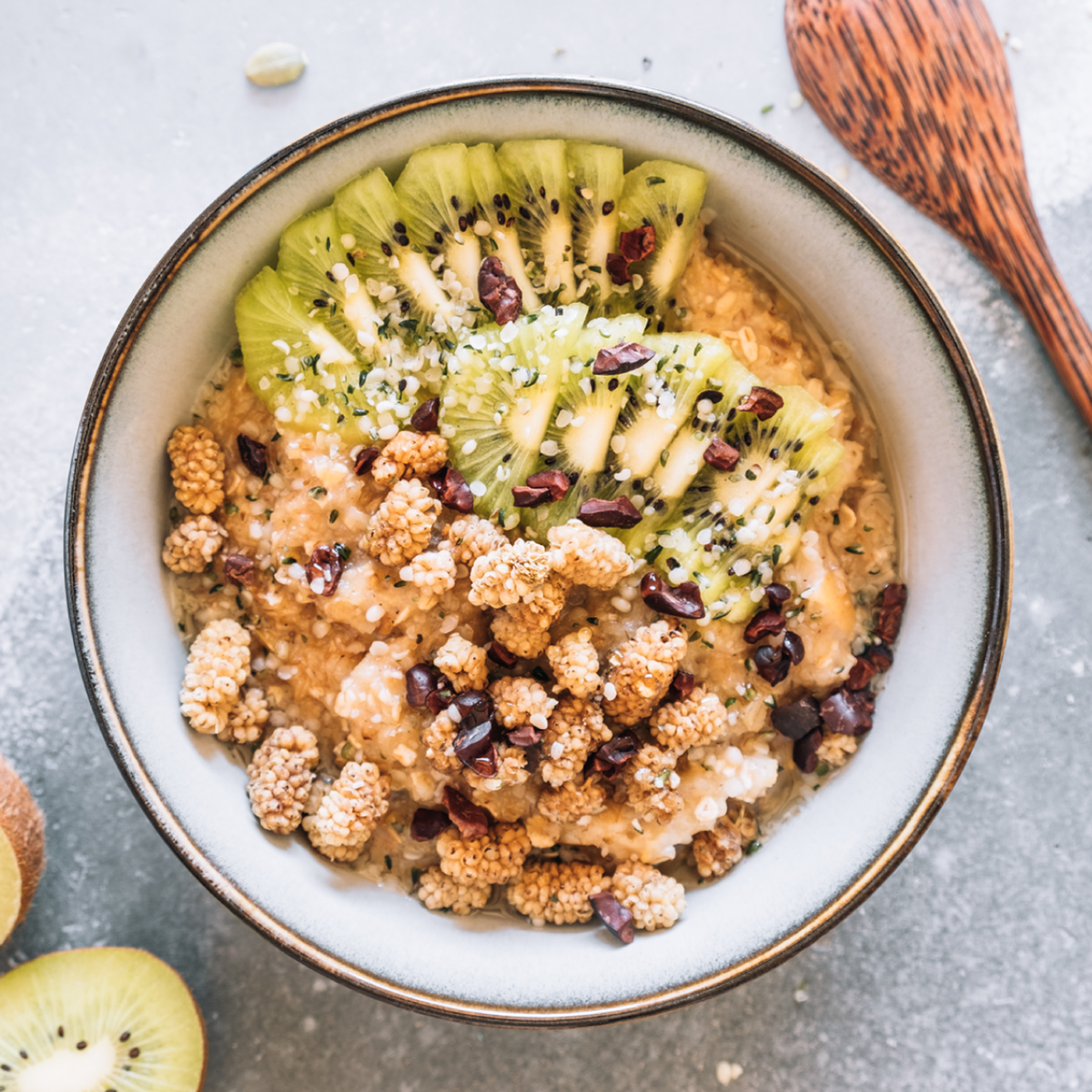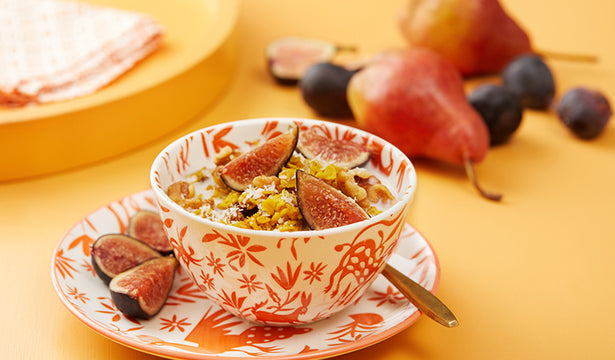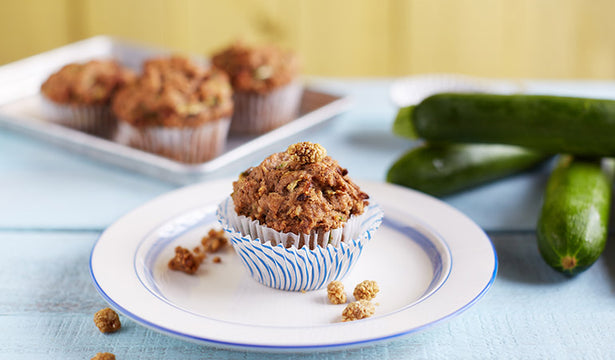Mulberries
Navitas Organics Mulberries are an everyday superfood staple! These dried berries are sweet, chewy and nutrient-dense. Snack on them, bake with them, mix them in everywhere!
 Click to play the video
Click to play the video

SWEET, CHEWY PERFECTION
Navitas Organics Mulberries are gently dehydrated at low temperatures for a nutritious, satisfying superberry experience.
- 100% organic dried white mulberries
- Ancient superberry cultivated by civilizations around the world
- Low temperature dried
- Good source of dietary fiber, calcium, iron & potassium
- Contains no added sugar, sulfites or preservatives
- See FAQs
Nutrition Facts
| % DV | ||
|---|---|---|
| Total Fat | 1g | 1% |
| Saturated Fat | 0g | 0% |
| Trans Fat | 0g | |
| Cholesterol | 0mg | 0% |
| Sodium | 0mg | 0% |
| Total Carbs | 25g | 9% |
| Dietary Fiber | 2g | 7% |
| Total Sugar | 21g | |
| Includes Added Sugar | 0g | 0% |
| Protein | 1g | |
| Vitamin D | 0mcg | 0% |
| Calcium | 103mg | 8% |
| Iron | 1mg | 6% |
| Potassium | 281mg | 6% |
Ingredients
Certified organic white mulberries (Morus alba).
How to Use
Deliciously sweet & chewy, Navitas Organics dried Mulberries are a fantastic addition to breakfast cereals, granola, smoothies, yogurt, trail mix and baked goods…if you don't snack your way to the bottom of the bag first.
Featured Review
– Sharif N.
Mulberries FAQs
What does a mulberry taste like?
Mulberries are a relative of a fig, and "fig-like" is often how their flavor is described. While some mulberry fruit varieties are red-purple and taste more like a tart blackberry, our mulberries are the white Turkish variety, prized for their maple-like sweetness, lack of astringency and high levels of antioxidants, including resveratrol. Not only are dried mulberries a great source of antioxidants, they also provide protein and essential minerals, making them a nutrient-dense alternative to raisins.
What makes mulberries a superfood?
White mulberries are a nutritional powerhouse and natural source of calcium, iron, vitamin C and dietary fiber. They're also abundant in antioxidants, including resveratrol, which is known for its heart-health benefits and anti-aging properties. These nutrients make our white mulberries a superfood go-to for your everyday diet.
What's the difference between white, red, and black mulberries?
While they share a name and many physical characteristics, the white, red, and black mulberry are worlds apart—literally: the white mulberry is native to East Asia; the red mulberry native to the eastern US; and the black mulberry to the Middle East. All three are from the Morus genus and produce oblong, clustered berries that are high in vitamin C, iron, calcium, fiber and a variety of antioxidants. The white mulberry has a long history of cultivation for both its berries and its leaves, which were used to feed silkworms and livestock. In Traditional Chinese Medicine (TCM), the mulberry tree is an extremely diverse plant, with the mulberry fruit, bark, and leaves serving their own unique therapeutic uses and health benefits.
What is the shelf life of Navitas Organics Mulberries and how should I store them?
To ensure you're enjoying your organic dried white mulberries at their freshest, look for the ‘best before’ date stamped on the back of the bag. This date is set 18 months out from the production date and reflects the tastiest and most nutritious timeframe to snack on your berries.
Refrigeration isn’t necessary to keep Navitas Organics Mulberries at their best; they’re happiest stored sealed in a cool, dark, dry place to maintain their flavor and nutrients.
Why is there a warning label on my mulberries?
Some of our superfoods fall under CA's Prop 65 labeling requirements. This is due to trace amounts of heavy metals that are naturally occurring in the organic soils in which our superfoods grow. Please note that Prop 65 is a right-to-know law, and not a determination of a product's safety. For more information, please see our Help Center articles about Prop 65 here.
Does your packing facility handle allergens?
Do you offer free shipping?
Can I order your products outside of the US?
Have more questions? Visit our Help Center
)
